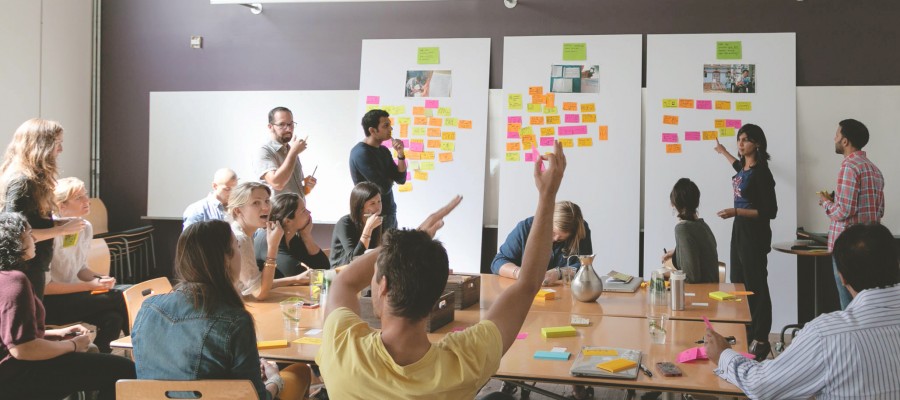Facilitator's Guide for Introducing Human-Centered Design

This step-by-step guide from Ideo.org is designed to be used by people who have some understanding of human-centred design (HCD) and want to introduce others to this creative approach to problem solving in a hands-on way. The materials in this guide will help a facilitator prepare and lead a one-day introductory session to HCD for a group of 5-20 people new to the approach.
Specifically, after the Welcome, Purpose, and Roles sections (p. 7), the resource includes Agreements (p. 9) and Planning Guidelines (p. 10), designed to give the facilitator a better idea of what to think about to bring a workshop session to life. The Facilitator's Planning Worksheet (p. 23) and Planning Timeline (p. 16) are working documents that can evolve during the planning process. The Workshop Content and Tools provided (p. 24) focus on how to best engage participants. The Facilitator's Notes (p. 32) can be used as a script to practice leading the workshop using the Workshop Deck (p. 31). Other materials include Agendas (p. 28), Participant Worksheets and Handouts (p. 70), and Participant Communications (p. 26). After the session, feedback can be communicated through the Participant Surveys (p. 72) and Facilitator's Survey (p. 75). "Remember to follow up with your participants, thank them for joining, and activate them to continue learning more about human-centered design."
Publishers
76
Design Kit website, January 29 2018. Image credit: coursetalk
Comments

Great concept with promising results
It is a great approach to conceptualizing and developing interventions that are acceptable to communities. I would like to know more the process and get an opportunity to apply this concept to my work. I work to improve routine immunization uptake services among communities. The uptake of immunization services for children is not just a matter of parental compliance and supply of quality services but is also complicated by misinformation. The disruptive forces of ignorance and rigidity, namely the Taliban terrorists, have promoted the refusal of vaccines in Pakistan and Afghanistan. The entire Polio Eradication Campaign has been held hijack by the Taliban and used a negotiating tool with the international development agencies and government. Last week a mother-daughter team of polio workers were shoot down in my home town of Quetta, Pakistan. It was done in broad day light during the vaccination Polio Mass Vaccination Campaign. The program managers stated that this incident would not stop the Polio Eradication activities, but communities also need to take action to protest against such incidents and hold the culprits accountable.
https://www.nytimes.com/2018/01/22/health/polio-pakistan-killing.html
- Log in to post comments
